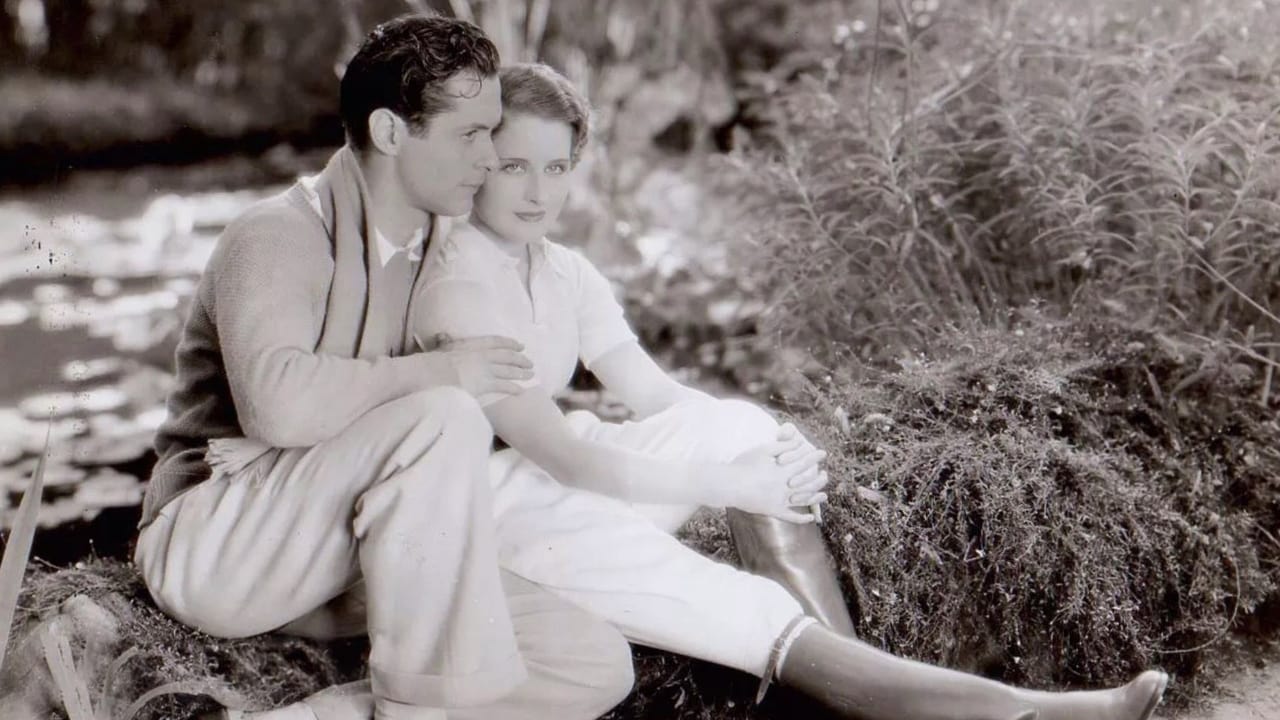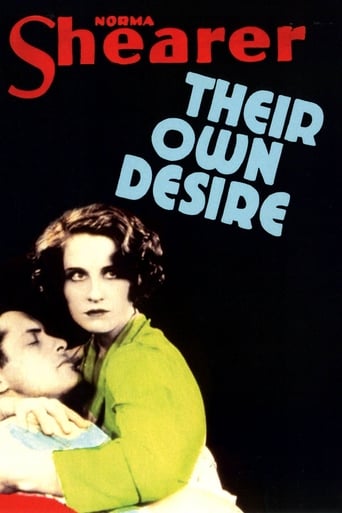

Today, most women initiate divorces. But there was a time when it was the other way around since women had few options outside of the home. If you were a woman, you'd just better hope that as the bloom fell off of your rose that your husband did not get the 7, 17, or 27 year itch. This is about the impact of one of those marriages with an itchy husband, an unlikely cad, Lewis Stone as Marlett.I like how this movie takes the time to build up the characters, always a trademark of screenwriter Frances Marion. A great deal of time is spent in the beginning to show the respect and friendship wealthy author Marlett has with his only child, Lally (Norma Shearer). Then a tell - she asks her dad as they walk up the drive, what book he is working on. He says it is a romance involving a 45 year old man. She, about 20, laughs at the idea. Marlett says that the middle aged are made of flesh and bone too. That life is not over at 30 as youngsters think, and that they thirst for romance, that "last" romance, indicating that dad might be thirsty. When they get to the top of the drive, the slender and glamorous Mrs. Chevers is talking to Lally's mom about her son, Doug, who is away at Princeton. Lally's mom is graying, a bit overweight, a bit sedentary, and Marlett calls her affectionately "mama". Indicating that he thinks of her as first Lally's mom - and a good one - and then a wife.A year passes and Marlett and his wife are planning to divorce, as is Mrs. Chevers from her husband, but Lally yet knows none of this. She walks into her dad's study and catches Mrs. Chevers and her father in a passionate embrace, talking of marriage. Then her dad tries to justify it. He says that he and her mother are not the same boy and girl who made all of those promises 23 years before. I like Lally's translations - that perhaps he sees her mom as fat and a bit boring "unlike the slick Mrs. Chevers". He says he intends to keep the house. She reminds him that doesn't matter to her since her mom is being bundled out of that house and Mrs. Cheever is being brought in to replace her. Lally says her final goodbye to him and plans to never marry because she will not be made a fool of as her mother has been, and the male sex has fallen mightily in her esteem because of her father's fall, which he won't even acknowledge as a misdeed.So off go mother and daughter for a summer vacation before mom goes to France for a divorce, which was the custom in that day. When Lally reiterates her vow to never marry, her mom is happy, which seems odd. Meanwhile, back at the ranch, Marlett is not succeeding at hanging out at his old haunts with his new mistress. They both get the cold shoulder from everyone. I'm not sure why this scene was in here other than to show that people did pass moral judgment on affairs and homewreckers at that time, and that a smooth transition did not await them both if they proceed.On vacation, Lally meets a guy (Robert Montgomery) who really fancies her. They dance, they enjoy each other's company, and maybe Lally is softening on men just a bit until she discovers his full name - Jack "Doug" Chevers - son of the woman who has ousted her mother, a symbol of why she decided to not take men seriously in the first place.So Lally is one confused girl. She has a mom who encourages her to play the field due to her own bad experience with marriage. She has a dad who thinks "until death do we part" is just a phrase people like to kick around at weddings, and she has a beau who is insisting on marriage now - as in right this minute. How will this all work out? Watch and find out.This is very good writing by Frances Marion who had already had a couple of short lived marriages that did not work out and one that did that ended in her husband's sudden death just the year before. Thus she could approach this subject of love from the viewpoint of someone who had seen all of the angles. I'd highly recommend it.
... View MoreFast, sexy, hyper articulate and attractive. Relatively simple love story, made extraordinary by powerhouse performance by Norma Shearer, particularly the scene where she confronts her father over his infidelity. Similar to the scene where she confronts her husband in ("I would have forgiven you anything") her Oscar winning performance in "The Divorcée" of that same year. Nominated twice for Oscars third ever outing. I love Robert Montgomery, among "Golden Age of Hollywood's " most frequent leading man to Garbo, Crawford, Shearer et. al. . Lewis Stone is as always great to see. The song (Blue is the Night??) in the middle is sooooo romantic.
... View MoreI watched and enjoyed this old first of the talkies. I it always cool for me to think of what life must have been prior to the depression and all of todays discoveries and new way of life. My mother was born in 1921, so I think of her life then. She would have been eight years old at this time. The cars , the actors, the dress is very nice and wonderfully done. I watch quite a lot of these old movies of this era, most were still silent at this point. This must have been one of the first of the 'talkies'. Just think what it was like to have no TV but to basically go to the movies for all you watched including news reals. It must've been great living in these days.
... View MoreThe movie has a somewhat overheated, strained quality to it, much like a soap opera and is primarily of interest for Norma Shearer's performance, which received a nomination for Best Actress for the 1929-30 Academy Awards, which she lost to herself, winning instead for her performance in The Divorcee, a better role in a much better film. Ms. Shearer was THE actress at the time and did quite well for many years. A good movie that could have been better and largely a curio now.
... View More